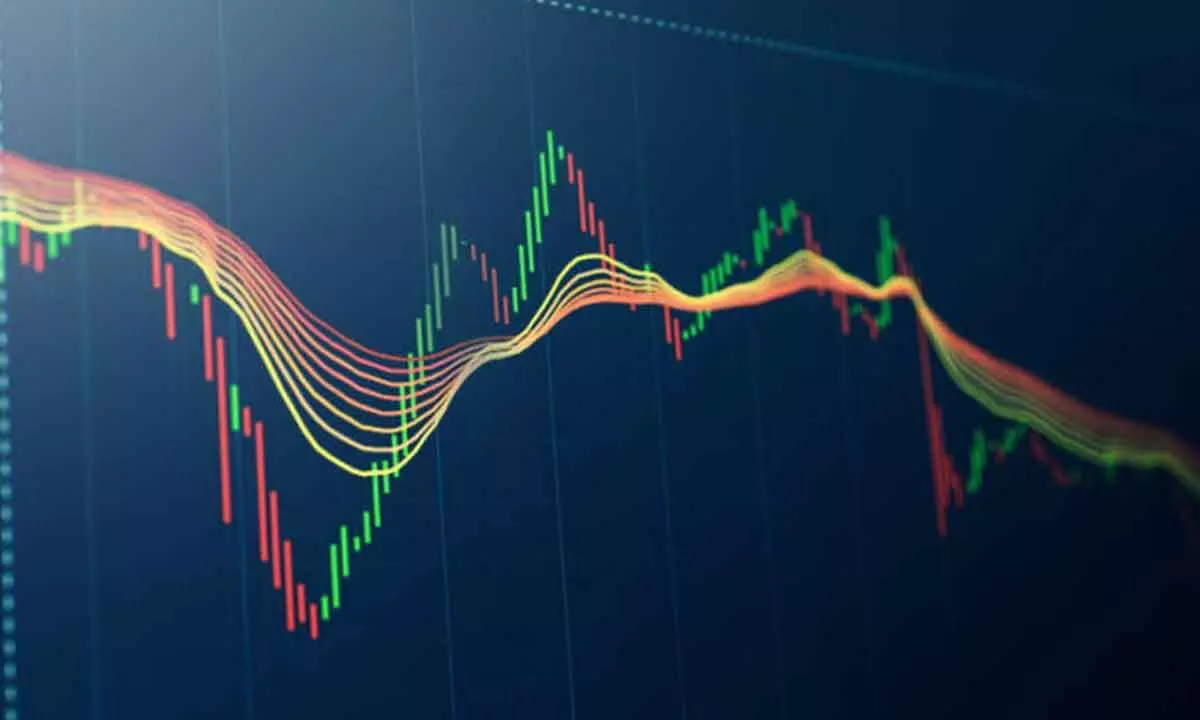Time to keep trailing stop losses
After testing the previous high and the sloping trendline drawn from Mar 2020, the index bounced to new highs
image for illustrative purpose

Bull Charting
• 193-week long-term uptrend
• RSI in the extreme zone for the past 5-days trading
• 6.47% above the 50 DMA and 11.06% above 200 DMA
The markets scaled new high after the announcement of election results in five States. NSE Nifty and the broader market indices rose to all-time highs. The Nifty is up by 701.5 points or 3.46 per cent. The BSE Sensex also gained by 3.47 per cent. The Broader market indices, Nifty Midcap and Smallcap indices, were up by 2.35 per cent and 1.15 per cent, respectively. Only the Nifty Pharma and FMCG indices declined by 0.58 per cent and 0.40 per cent. All other sectoral indices were gained. The Energy index is the top gainer with 7.90 per cent, followed by Bank Nifty with 5.46 per cent. The FIIs bought Rs10,874.72 crore, and the DIIs bought Rs5,774.55 crore worth of equities this month.
The Nifty continued to gain for the sixth straight week. After testing the previous high and the sloping trendline drawn from March 2020, the index has bounced to new highs. As we suspected in July, the 88-week consolidation in 15,200-19,200 is the Stage-1 base. Prior to that, it was rallied by 147.69 per cent or 11,093 points in just 82 weeks. By closing the previous high (20,222), the index has registered a 21-week first base in a transition to Stage 2. With this breakout, the 18600-887 has become a new base for the market. Only below the 19700-500 zone will be short to medium-term negative for the market. The current 193-week long-term uptrend will be negated only below the swing low of 18,837 points, causing the market to enter into a downtrend as it forms a lower low and breaks the trendline support.
The intermediate downtrend of 18.35 per cent from Oct 2021 to January 2022 can be considered a Catergory-2 correction and a major correction in an ongoing 193-week long-term uptrend. If you see this set-up from the Fibonacci extension lens, the Nifty closed above the 50 per cent extension level (20730). The probability of forming a second base in Stage-2 is around 22039, which is a 61.8 per cent extension level. The pattern target is a 100 per cent extension at 26,507 points, which can be achieved by the Jan-Mar 2025 quarter. This is where the super cycle will end, and the market will turn into a serious bear market, which can repeat 1992, 2008 and 2020 kinds of crashes, and the market will correct at least 25 per cent from the top.
From a near-term perspective, the Nifty looks overstretched, as the RSI has been in the extreme zone for the past five days. Currently, it is at 82.83, which is the highest level in recent history. The index tested the psychological target of 21,000 last week. The Nifty is now trading 6.47 per cent above the 50 DMA and 11.06 per cent above the 200 DMA. The distance between these key moving averages also shows overbought conditions. Expanding Bollinger bands also suggest overstretched market conditions. The last three days of price actions are in a tight range of 156 points, indicating consolidation. The support rose to 20,600, and last Monday’s gap area.
If the Nifty can’t take out Monday’s high of 21,006 points, we may see some retracement towards 8EMA of 20637. Below this level, the gap of 20183-507 will be the crucial support zone.
Some factors may dampen the bullish mood. The negative earnings surprises and the deceleration in the earnings will be a factor to consider. Another factor is a negative surprise in the forthcoming general elections (event risk). The market is expecting the most positive outcomes of these two factors, which is the reason for buoyancy in the market. The prolonger low VIX regime is another major factor to keep in mind. This is an unusual scenario in the history. It may cause an unexpected bear attack. Normally, the declines are sharper and short-lived. We have not seen a significant correction since March 2020. The end of the four-year cycle is very near. Even if it extends, expect a category-1 correction (11-13 per cent from the top). In a nutshell, this is the time to be solid and defensive with risk management. Take out the partial profits on the table, and keep trailing stop losses. The IT index is trading at the pivot, and a breakout will result in a transition into Stage 2. Focus on good quality and higher relative strength stocks.
(The author is Chief Mentor, Indus School of Technical Analysis, Financial Journalist, Technical Analyst, Trainer and Family Fund Manager)

